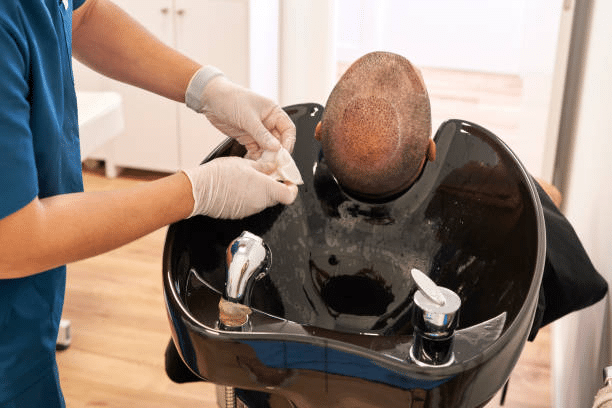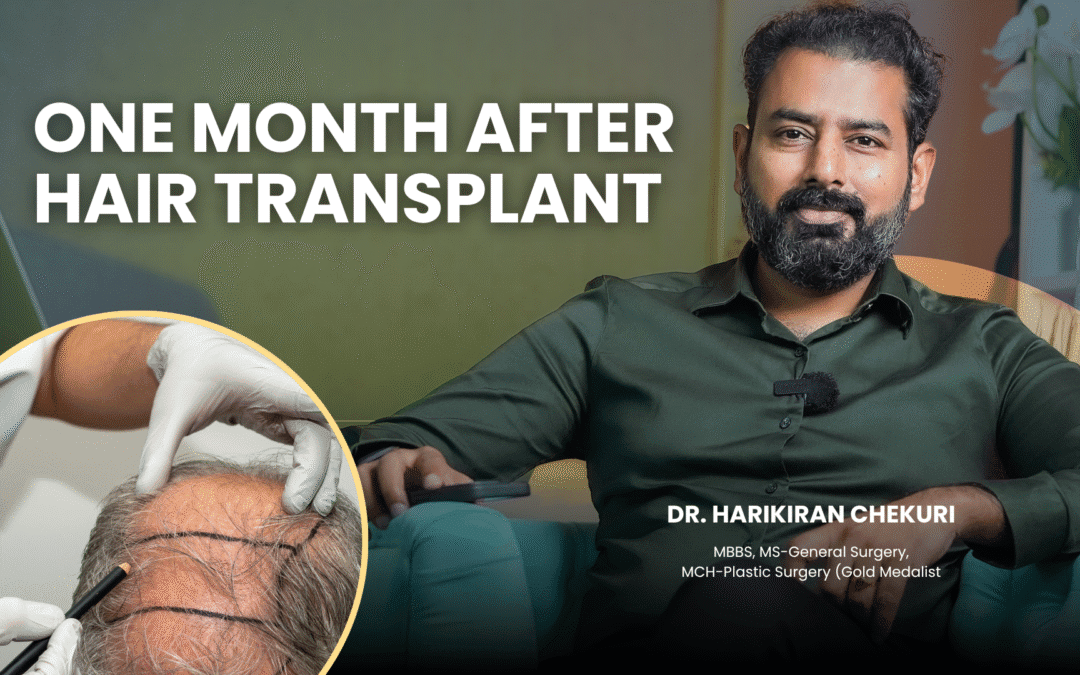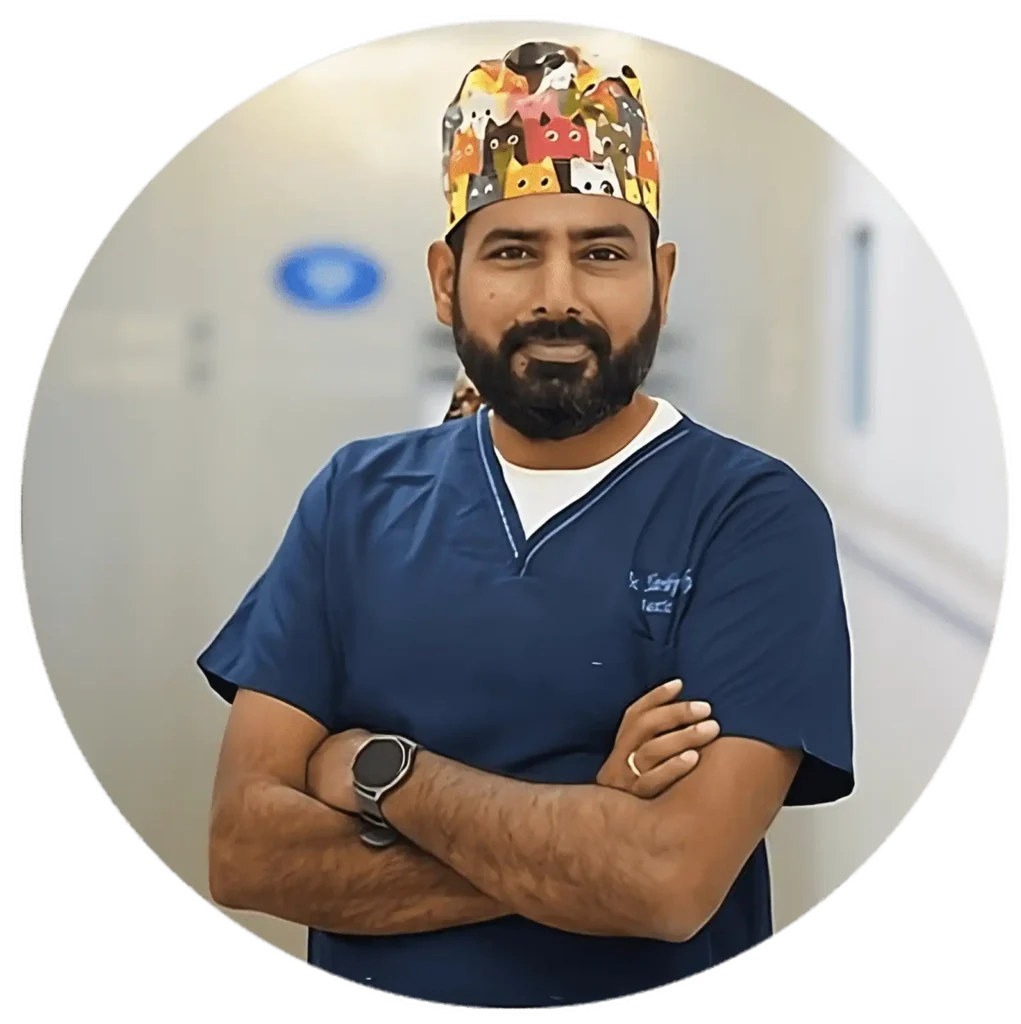The first month after a hair transplant can feel like a rollercoaster of emotions. Many patients describe this period as exciting and overwhelming—exciting because they’ve taken a big step toward restoring their confidence, and overwhelming because they are anxious about what results to expect. If you find yourself examining your scalp every morning, you’re not alone.
Globally, over 700,000 hair restoration procedures are performed each year, according to ISHRS (International Society of Hair Restoration Surgery) data, while in India alone, the demand for hair transplants has grown by nearly 25% in the past five years. These numbers highlight not just the popularity but also the reliability of the procedure.
Dr. Harikiran Chekuri, a prominent hair transplant surgeon in Hyderabad, shares:
“The first month is a transition phase where the scalp is healing, and patients are learning to trust the process. It is common to see shedding during this stage, but this is not failure—it is part of the natural cycle of hair growth. Remember, real transformation begins after patience and consistent follow-up care.”
When approached with the right knowledge and guidance, this stage becomes less about worry and more about anticipation.
What to Expect One Month After Hair Transplant?

At the one-month mark, many patients notice changes that may feel unusual but are completely normal:
Shedding of Transplanted Hair:
Around two to four weeks post-surgery, the transplanted hair often begins to fall out. This is called shock loss and can cause unnecessary concern. In reality, the follicles remain intact under the skin, ready to enter the growth phase.
Redness and Mild Scabbing:
Any redness usually subsides within the first few weeks, but for some individuals, slight pinkness may persist for up to a month. This is part of the healing process.
Initial Growth Signs:
A few patients notice thin, delicate hair strands emerging, although they are often not very visible yet. This is a positive sign but should not be rushed.
Numbness or Tingling:
Temporary sensations on the scalp are common and usually fade within the next few weeks as nerves recover.
If you’re feeling unsure if the progress is normal, don’t worry! You’re right where you should be.
Dr. Harikiran Chekuri, a seasoned plastic surgeon in Hyderabad, explains:
“By the one-month stage, the transplant is still in its early recovery phase. Patients must understand that hair growth is not instantaneous—it follows the body’s natural rhythm. Most noticeable growth begins around three to four months, with steady progress continuing for a year.”
Are you experiencing unusual changes in your scalp a month after surgery? Seek advice from a qualified hair restoration professional to guide you with personalized reassurance.
First Month to First Year - Recovery Timeline
Recovery after a hair transplant is a gradual process, and the results reveal themselves step by step. Here’s a clear timeline to help you visualize what lies ahead:
1–3 Months:
Hair shedding continues, followed by the resting phase. Patients may feel anxious during this “quiet period,” but it is a vital step before new growth begins.
3–6 Months:
Thin new hairs start to sprout. These may appear fine and uneven at first, but they gradually thicken.
6–9 Months:
Noticeable improvement becomes visible. The density and volume of the hairline improve, giving patients a glimpse of the final outcome.
9–12 Months:
Most patients achieve around 80–90% of their results. Hair appears thicker, natural, and fuller.
Dr. Harikiran Chekuri, a skilled cosmetic surgeon in Hyderabad, says:
“Each patient’s timeline can vary slightly, but the principle remains the same—results mature over time. The goal is not just hair growth, but natural integration with your existing hair, ensuring harmony and balance in your appearance.”
Tips for Smoother Healing

Proper aftercare ensures that transplanted follicles remain healthy and produce strong, lasting hair. Here’s what patients should focus on:
Gentle Washing:
Use mild shampoo recommended by your surgeon. Avoid scrubbing and instead, pour water gently over the scalp.
Avoiding Direct Sunlight:
Protect your scalp with a hat or scarf if you need to step out. Sunburn at this stage can harm the healing follicles.
No Strenuous Activities:
Avoid gym workouts, swimming, or heavy lifting for at least a few weeks to prevent strain on grafts.
Medication and Topical Solutions:
Follow prescribed medications, such as antibiotics or hair growth stimulants, as advised.
Patience with Styling Products:
Hold off on using gels, sprays, or coloring agents until your surgeon confirms it is safe.
Concerned about your recovery after a hair transplant? Reach out to a qualified specialist who can evaluate your scalp health and put your mind at ease.
When to Contact a Surgeon?
While most recovery signs are normal, there are certain situations where professional help is essential. You should consult your surgeon if you notice:
Excessive Pain or Swelling: Beyond mild discomfort, persistent pain may indicate infection.
Pus or Unusual Discharge: This is a warning sign of possible complications.
Severe Itching or Rashes: Allergic reactions or scalp infections require prompt attention.
Patchy or Delayed Growth: While some variation is expected, significant differences in growth patterns should be evaluated.
Dr. Harikiran Chekuri, an experienced hair transplant surgeon in Hyderabad, notes:
“Patients should never ignore their intuition. If something feels off, it is always better to check with your surgeon rather than waiting. Early intervention can prevent complications and ensure the best outcome.”
Conclusion
The first month after a hair transplant is a delicate phase filled with curiosity, hope, and sometimes anxiety. Remember, hair restoration is not an overnight transformation—it’s a journey that unfolds over a year. With proper aftercare, patience, and timely professional guidance, results can be deeply rewarding.
Still unsure about what’s normal in your recovery journey? Consult a trusted hair restoration expert who can provide clarity and support every step of the way.
Frequently Asked Questions
1. Why does hair fall out one month after hair transplant?
This shedding is completely natural. The hair shafts fall, but the follicles remain alive beneath the skin. They re-enter the growth phase in a few months.
2. Can I resume gym workouts one month after a hair transplant?
Light exercise like walking is usually fine, but heavy workouts or weightlifting should still be avoided. Always follow your surgeon’s advice before resuming strenuous activity.
3. Will my new hair look natural after the transplant?
Yes, when performed by experienced surgeons, the transplanted hair blends seamlessly with your existing hairline. Results typically become fully natural by the end of the first year.
4. Is it normal to see pimples on the scalp after a month?
Yes, small pimples may appear as new hairs break through the skin. These are harmless and usually resolve on their own, though warm compresses can help.
5. How long will the transplanted hair last?
Transplanted follicles are generally permanent since they are resistant to the hormone DHT that causes balding. With proper care, results can last a lifetime.
https://www.webmd.com/skin-problems-and-treatments/hair-loss/hair-transplants
https://my.clevelandclinic.org/health/treatments/21519-hair-transplant
Disclaimer: The information shared in this content is for educational purposes only and not for promotional use.



